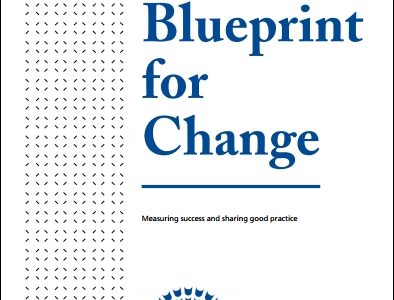It was with some trepidation that we looked at the latest UK Government Construction Strategy 2016-20, released last week (available here). The previous strategy, Construction 2025 (published in July 2013) and the wider-ranging Digital Built Britain strategy (February 2015 – read our July 2015 blog post: Building a better built environment industry) were both produced under the coalition government, but the current administration has reduced some elements of government engagement with the construction sector – the Construction Leadership Council was pared back, and the post of Government Chief Construction Advisor was discontinued. Would the Government, collectively construction’s biggest single client, be reining back its industry ambitions?
Data and skills
The initial signs, however, are encouraging. The direction of travel remains broadly the same, with heightened commitment to “digital and data capability,” and to improving the sector’s skills and resilience. In the ministerial forward, Lord Bridges says:
“we need to improve skills, both within government and the construction sector overall. Our strategy aims to improve government’s capacity and capability as a client, while helping the sector recruit and retain skilled employees.”
The body of the strategy mentions apprenticeships (“delivering 20,000 apprenticeships through central government procurement over this Parliament”), it talks about the need for skills in building information modelling (BIM; read our previous post: Tackling skills gaps: can we learn from BIM?) – still a major component of the digital vision – and then underlines the major skills challenges:
“Employers are facing difficulties in attracting skilled employees and 13% of employers reported not having enough skilled employees for some of 2014. This skills gap, if not addressed, will lead to inflation and reduced productivity in the way the industry operates. … Young people are currently underrepresented in the construction industry compared to the economy as a whole, only around 10% are aged between 19 and 24.”
Skills planning tools
Interestingly, to support its skills drive, the strategy says the Construction Leadership Council is developing a guide on what good skills investment looks like, to aid both government procurers and the industry when bidding for future government contracts. And since publishing its National Infrastructure Plan for Skills (September 2015), Infrastructure UK, now part of the Infrastructure and Projects Authority, is developing a tool to help clients utilise pipeline data to model current and future skills requirements. There is also talk of “sharing market intelligence.”
We hope these ambitions are carried through, and that there is a lot of joined-up thinking. As we have previously argued (Data for efficiency and growth), there is considerable scope to take the government’s enlightened approach to open data, and to pair this with ongoing initiatives – such as SkillsPlanner (part government-funded through Innovate UK) – that are focused on improving the match of skills to jobs and enabling training provision to be responsive to industry needs.



 As if we needed reminding, the BRE Academy survey findings (based on 300+ industry respondents, surveyed November 2015 – to January 2016; survey summary
As if we needed reminding, the BRE Academy survey findings (based on 300+ industry respondents, surveyed November 2015 – to January 2016; survey summary  In 2009, the appointment of the first chief construction advisor started what has become a powerful modernising movement aimed at making construction and the built environment more cost effective and sustainable (“Cash is King, but Carbon is Queen” was the Paul Morrell mantra). BIM is just a minor part of a suite of changes pushed in successive government construction strategies. But because deployment of BIM was made mandatory for businesses wanting to work on centrally procured public sector projects from April 2016, we have seen an unprecedented effort to change industry practices, cultures and behaviours, as well as technologies, to accommodate this new (still evolving) and more collaborative way of working.
In 2009, the appointment of the first chief construction advisor started what has become a powerful modernising movement aimed at making construction and the built environment more cost effective and sustainable (“Cash is King, but Carbon is Queen” was the Paul Morrell mantra). BIM is just a minor part of a suite of changes pushed in successive government construction strategies. But because deployment of BIM was made mandatory for businesses wanting to work on centrally procured public sector projects from April 2016, we have seen an unprecedented effort to change industry practices, cultures and behaviours, as well as technologies, to accommodate this new (still evolving) and more collaborative way of working. SkillsPlanner has grand ambitions but is on a (currently) much smaller scale. We have already managed to create a growing consortium of clients, contractors, local authorities and other industry organisations, plus some technology and data specialists, and got them collaborating, collating and sharing skills-related data. By maintaining our pan-industry approach and by basing our platform on future-proof Open Linked Data, we think we can make great strides in helping the industry tackle its skills shortages. But we need more industry organisations, and more joined-up data, to support our effort….
SkillsPlanner has grand ambitions but is on a (currently) much smaller scale. We have already managed to create a growing consortium of clients, contractors, local authorities and other industry organisations, plus some technology and data specialists, and got them collaborating, collating and sharing skills-related data. By maintaining our pan-industry approach and by basing our platform on future-proof Open Linked Data, we think we can make great strides in helping the industry tackle its skills shortages. But we need more industry organisations, and more joined-up data, to support our effort….



